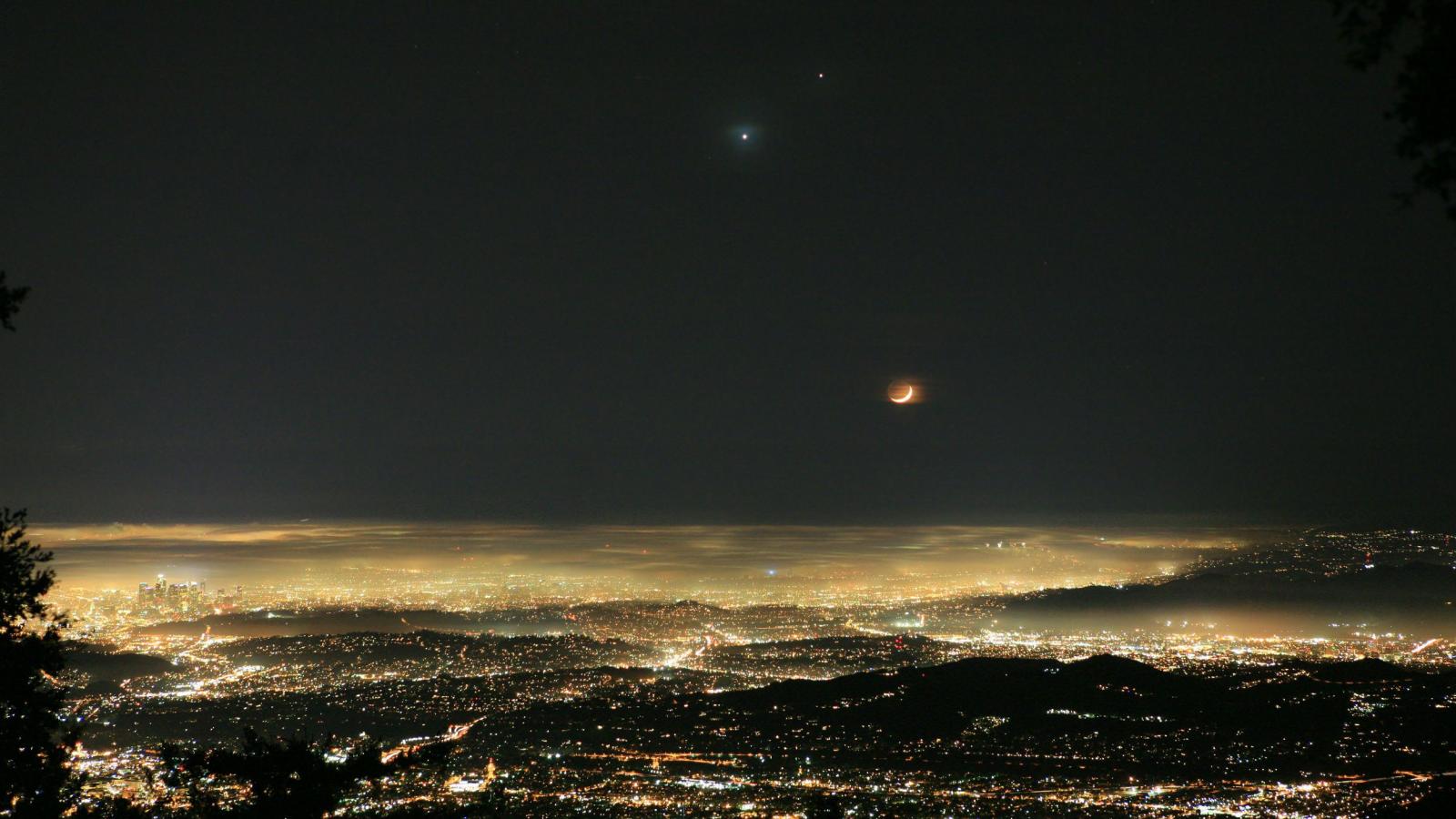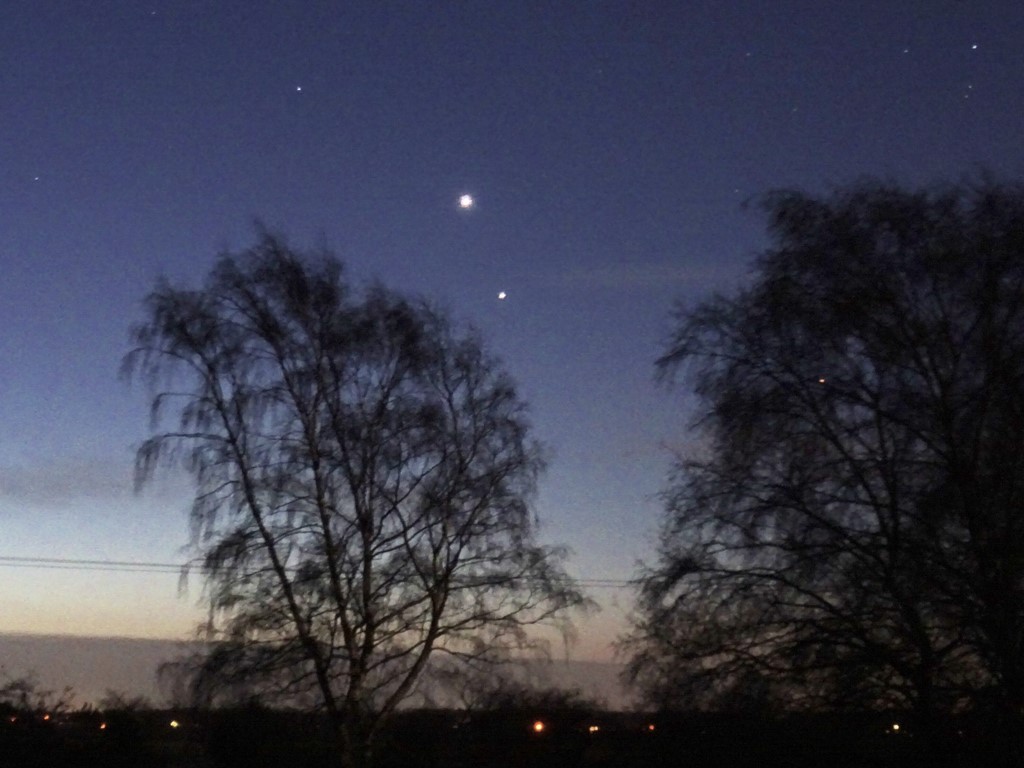
On June 30 and July 1, 2015, look for the sky’s brightest and second-brightest planets to stage their closest conjunction until August, 2016. Venus and Jupiter will be less than one-half degree apart. That’s less than the moon’s diameter on our sky’s dome.
Venus is currently about to pass between the sun and Earth. It will sweep some 8 degrees S. of the sun on August 15. Meanwhile, Earth passed between Jupiter and the sun in February, 2015. So Jupiter and Venus are nowhere near each other in space.
And yet, as we look outward from Earth, we see these two planets aligned on nearly the same line of sight.
By the way, one astronomical unit = the mean sun/Earth distance (approximately 150 million kilometers or 93 million miles).
Venus is a small, rocky planet like Earth. Jupiter is a huge gas giant planet.
And yet Venus and Jupiter do have things in common. They both appear bright in Earth’s sky in part because the cloud cover on these worlds is so good at reflecting sunlight.

Jupiter is much farther away than Venus, and yet its sheer size guarantees the king planet’s brilliance. Jupiter’s diameter is nearly 12 times greater than Venus’ diameter. And Jupiter is nearly 12 times farther away from Earth than Venus is tonight. That means, as seen through the telescope, the apparent angular diameters of Venus and Jupiter would appear about equal.
Jupiter, the largest planet in the solar system, rotates more quickly than any other planet. It spins full circle relative to the backdrop stars in less than 10 hours. Venus, the sixth largest planet, rotates more slowly than any other solar system planet, rotating full circle relative to the backdrop stars in 243 days.
So enjoy Jupiter and Venus tonight! They are very different worlds, but both spectacularly bright in Earth’s sky – and spectacularly near each other!
Also, be sure to circle July 18, 2015 on your calendar. Venus will be almost in conjunction with the star Regulus, brightest star in the constellation Leo the Lion. On July 18, the crescent moon, Venus and Jupiter will all fit within a circle sporting a diameter of less than four degrees (approximately two finger-widths at an arms length). Don’t miss out on this close-knit celestial grouping on July 18, featuring the moon, Venus and Jupiter – the brightest, second-brightest and third-brightest orbs of nighttime, respectively.
Bottom line: On June 30, 2015 – and on July 1 – shortly after sunset, watch for Venus and Jupiter! They are the sky’s brightest and second-brightest planets. This is their closest pairing in the evening sky until August 27, 2016.




